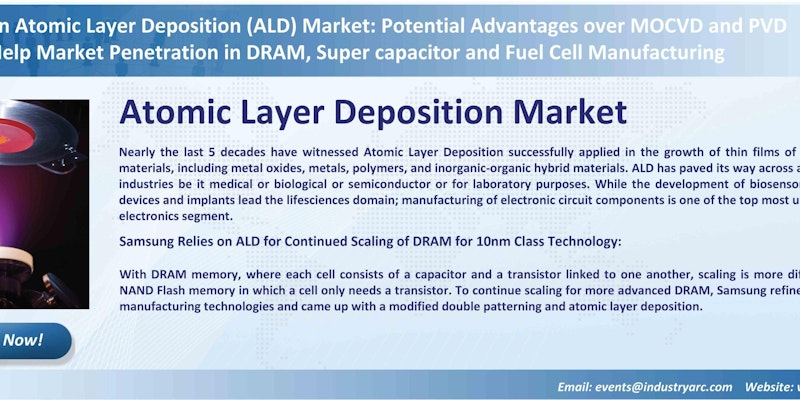Description
A Webbinat by IndustryARC Nearly
the last 5 decades have witnessed Atomic Layer Deposition successfully
applied in the growth of thin films of many classes of materials,
including metal oxides, metals, polymers, and inorganic-organic hybrid
materials. ALD has paved its way across a large section of industries be
it medical or biological or semiconductor or for laboratory purposes.
While the development of biosensors, drug delivery devices and implants
lead the lifesciences domain; manufacturing of electronic circuit
components is one of the top most uses of ALD in the electronics
segment.
Samsung Relies on ALD for Continued Scaling of DRAM for 10nm Class Technology:
With DRAM memory, where each cell consists of a capacitor and a transistor linked to one another, scaling is more difficult than with NAND Flash memory in which a cell only needs a transistor. To continue scaling for more advanced DRAM, Samsung refined its design and manufacturing technologies and came up with a modified double patterning and atomic layer deposition.The Fuel Cell and ALD Overhaul:
ALD has clearly gained prominence in manufacture of fuel cell. IndustryARC predicts high potential in this field in the coming years. Solid Oxide Fuel Cells are noted a quality contribution to the global ALD market:Durable and high-performance low temperature solid oxide fuel cells
ALD of ultrathin blocking layer for low-temperature solid oxide fuel cell on nanoporous substrate

No comments:
Post a Comment